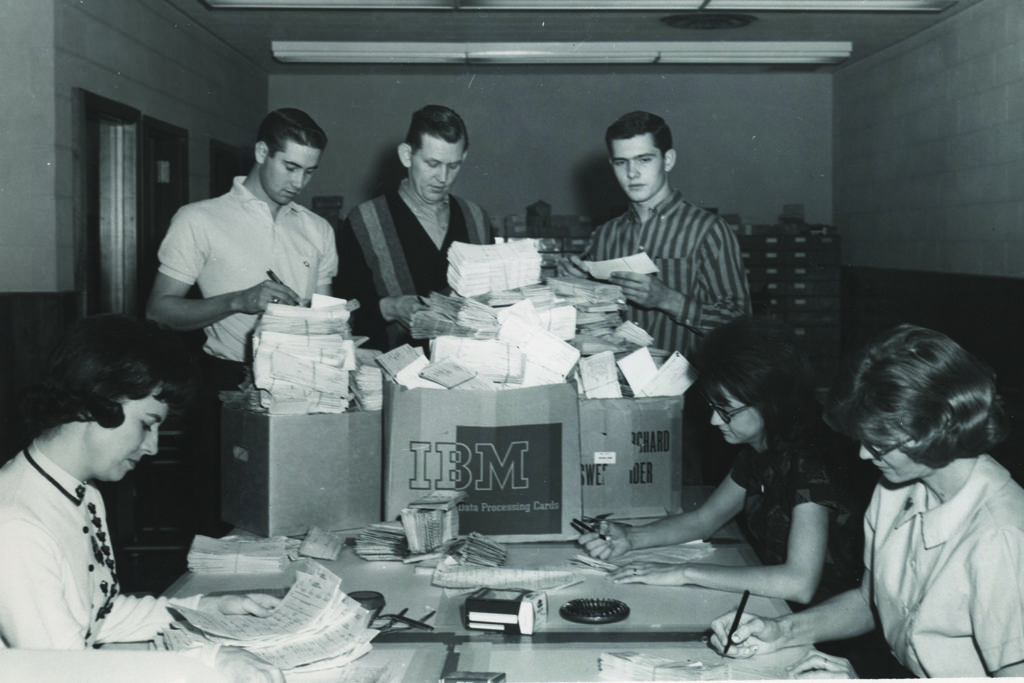By John Johnson
 PCCA’s appetite for innovation was sparked again in 1989 after TELCOT set its all-time single-day trading record of 385,599 bales. The volume of cotton sold that day was an incredible achievement for the online marketing system, but its aftermath presented a formidable challenge for the co-op’s staff.
PCCA’s appetite for innovation was sparked again in 1989 after TELCOT set its all-time single-day trading record of 385,599 bales. The volume of cotton sold that day was an incredible achievement for the online marketing system, but its aftermath presented a formidable challenge for the co-op’s staff.
Paper warehouse receipts, representing title to bales, had to be retrieved for each bale to complete the sales and deliver the cotton to buyers. At that time, the receipts consisted of green IBM paper punch cards stored in a Lubbock bank vault. Each bale also had a punch card containing cotton classing information. To put it in perspective, the total number of punch cards needed would represent a stack approximately 450 feet high. The task would take days to complete, but an innovative idea was already floating around PCCA’s Information Systems department.
“We figured out that every day that passed without transferring that many receipts cost us (PCCA) over $50,000 in interest,” recalled Joe Tubb, PCCA Vice President of Information Systems, before his retirement in 2020. “It was time for a technology solution.”
Tubb and other IS team members went to work to bring the idea of automating the process of transferring warehouse receipts to life. Soon, electronic warehouse receipts were born and patented by PCCA. With permission from the National Cotton Council, a pilot project was launched for the 1990 crop at Tri-County Co-op Gin of Dodson in the eastern Texas Panhandle.
Based on the pilot project’s success, PCCA implemented the program in its South Texas operations for the 1991 crop year, followed by West Texas and Southwest Oklahoma. It quickly became apparent that growers and buyers liked the speed the electronic system brought to the cotton marketing process. However, PCCA patenting the concept was not well received initially by growers in other parts of the U.S. Cotton Belt who thought the program should be available to the entire industry. PCCA Vice President of Operations Darryl Lindsey at the time explained the co-op paid for the development of the program, and the co-op’s leadership felt compelled to protect its grow- er-owners’ investment by patenting the program.
Eventually, however, PCCA licensed the rights to the technology to the National Cotton Council for the industry’s greater good. EWR, Inc., a new company was created in 1993 as a central clearing house for electronic receipts. It is another example of how PCCA’s commitment to innovation benefitted the entire U.S. cotton industry.


